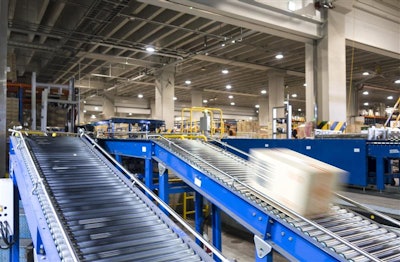
Over the past decade, on-demand manufacturing has been transforming the supply chain industry. While traditional manufacturing requires products to be made and then warehoused until they are ready to be shipped, on-demand makes it possible to manufacture goods only when needed and in the quantities required.
Eliminating the cost and effort of storing and managing inventory is a key reason more companies are turning to on-demand manufacturing. Driven largely by the e-commerce boom and shifting consumer preferences, the on-demand market has been exploding. On-demand, also called cloud manufacturing, is expected to reach about $112 billion by 2024, growing at almost 20% annually, according to MarketWatch.
A number of other factors contribute to that growth. Due to its greater flexibility and ability to produce one-off orders, brands no longer have to guess what consumer demand will be for a product or style and stockpile inventory accordingly. On-demand also minimizes the need to meet minimum order requirements.
In addition, on-demand allows for more opportunities to create unique, specialized products, which consumers are increasingly seeking. E-commerce has redefined the customer experience, allowing consumers to review and compare a wider range of products than ever before. The adaptability of on-demand capabilities can support shifting consumer needs by making it possible for brands to accommodate the rising demand for customized and small-batch goods, as well as responding quickly to changes in styles or trends.
Among the other factors contributing to the widening adoption of on-demand manufacturing are the decreasing costs of 3D printing, government initiatives to support the modernization of manufacturing industries, rising consumer demand for artisanal goods in a mass-produced world and a stronger need for businesses to deploy cloud-based solutions across manufacturing companies.
As brands of all sizes increasingly turn to on-demand manufacturing, supply chain management will transform as well. Here are the key ways on-demand manufacturing is disrupting the supply chain.
Limiting over-production
With traditional manufacturing, brands must estimate consumer demand for each product. That leads to overproduction, especially in the fashion industry where styles and trends can rapidly shift. When items aren’t purchased, many wind up as landfill waste or are incinerated. Almost 87% of textile materials are wasted, representing a lost opportunity of more than $100 billion annually. Because on-demand manufacturing allows companies to produce only what consumers order, it eliminates that unnecessary production and environmentally harmful waste. Simply put, companies using cloud manufacturing can implement a shorter and more efficient supply chain.
Shifting toward sustainable processes
Moving into 2021, we will continue to see conversations around the impact consumerism has on the environment. As we learn more about ways to cut back our carbon footprint in our personal lives, we become more aware of how our shopping experiences contribute to depleting our planet’s natural resources. Consumers are increasingly interested in sustainable practices and want to engage with those retailers who are socially responsible and transparent with their production and fulfillment processes.
For retailers, this could mean incorporating organic, reusable, sustainable materials, and methods into their supply chain. For example, retailers may introduce a vendor that uses dye sublimation as a printing method. Dye sublimation is faster to use, produces less waste, reduces energy, and provides positive experiences for printing flexibility. We expect to see it taking off in the years to come.
Moving toward localized production
The Coronavirus disease (COVID-19) pandemic forced many businesses and organizations to rethink their supply chain operations. Regionalizing production facilities, coupled with the advantages of on-demand manufacturing, provides an ideal solution to minimizing supply chain disruptions like a global health pandemic or a natural disaster.
Localized production generally provides quicker turnaround times because businesses can manufacture items closer to the end customer, reducing the time from production to delivery and saving the consumer on shipping costs. Additionally, incorporating an agile solution like on-demand manufacturing allows businesses to tighten the connection between demand and supply, further reducing supply chain risks.
Streamlining operations
With on-demand manufacturing, brands can outsource their supply chain solutions. That allows them to concentrate less on logistics and focus on what they do best--designing, marketing, and selling. On-demand also provides an opportunity to easily test new ideas and designs in a cost-effective way, which benefits companies of all sizes. For small brands or startups, the ease and efficiency of on-demand enables them to quickly go-to-market. For businesses in the apparel and home goods market in particular, both of which have blossomed over the past year, on-demand manufacturing is a highly effective approach to scaling their operations.
Conclusion
Retailers have been hard hit by the pandemic, with many needing to reevaluate their operations to compete in a changing landscape. On-demand can transform the manufacturing industry as brands address the shifting demands of consumers while reducing costs and harmful environmental impacts. While on-demand initially provided growth opportunities for small to medium-sized businesses, more enterprise brands are taking advantage of this innovative, cost-effective, and sustainable manufacturing process. Especially at a time when travel restrictions are more limited and facility closures due to safety are more frequent, having a resilient, shortened supply chain is imperative to keep orders flowing.

















